- 1. What is the Value of the Global Influencer Marketing Industry in 2026?
- 2. Why is Instagram Considered the Top Platform for Influencer Marketing?
- 3. How Significant is Social Media in Influencer Marketing?
- 4. What Role Do Engagement Metrics Play in Influencer Marketing?
- 5. How Do Different Types of Influencers Perform on Instagram?
- 6. What is the Market Size of Instagram Influencer Marketing?
- 7. How Do Influencer Charges Vary on Instagram?
- 8. Which Categories Dominate Instagram Influencer Marketing?
- 9. How Effective is Influencer Marketing Compared to Traditional Advertising?
- 10. What Are the Most Mentioned Brands by Influencers on Instagram?
- 11. How Do TikTok Influencers Compare to Other Platforms?
- 12. What Are the Growth Trends for TikTok Influencers?
- 13. How Popular is YouTube for Influencer Marketing?
- 14. What Types of Content Perform Best on YouTube?
- 15. How Do Influencers Impact Consumer Purchasing Decisions?
- 16. How Do Influencers on Different Platforms Charge for Their Services?
- 17. What are the Key Metrics for Measuring Influencer Marketing Success?
- 18. How Do Influencers on Instagram Vary by Follower Count?
- 19. What Factors Do B2B Brands Consider When Choosing Influencers?
- 20. How Do B2B Brands Utilize Influencer Marketing?
- 21. How Do Brands Measure the Success of Influencer Marketing Campaigns?
- 22. What is the Distribution of Influencer Types on Social Media?
- 23. How Do Influencer Engagement Rates Vary Across Platforms?
- 24. What Are the Most Common Content Types for Influencer Marketing?
- 25. How Do Influencer Marketing Strategies Differ Between B2B and B2C?
- 26. How Do Influencers Build Trust with Their Audiences?
- 27. How Does Influencer Marketing Impact Brand Awareness?
- 28. What Are the Financial Implications of Influencer Marketing?
- 29. How Do Different Social Media Platforms Compare for Influencer Marketing?
- 30. What Future Trends Are Expected in Influencer Marketing?
- We got all the latest Marketing Stats here:
Influencer marketing has transformed the digital landscape, becoming an essential part of many marketing strategies. As we move into 2024, the industry continues to evolve with new trends and insights. This article will explore the latest statistics and trends in influencer marketing, providing valuable information for brands and marketers looking to leverage this powerful marketing tool.
1. What is the Value of the Global Influencer Marketing Industry in 2026?

The global influencer marketing industry is expected to be worth $24 billion by the end of 2024. This growth reflects the increasing reliance on influencers to drive brand awareness and sales. Despite economic challenges and shifts in consumer behavior, influencer marketing remains a robust and valuable sector.
The exponential growth of the influencer marketing industry is driven by several key factors. The rise of social media platforms, the increasing trust consumers place in peer recommendations, and the ability of influencers to create highly engaging content all contribute to the industry’s expansion. Businesses recognize that traditional advertising methods are often less effective in today’s digital landscape, prompting a shift towards influencer partnerships that offer more authentic and relatable marketing.
2. Why is Instagram Considered the Top Platform for Influencer Marketing?
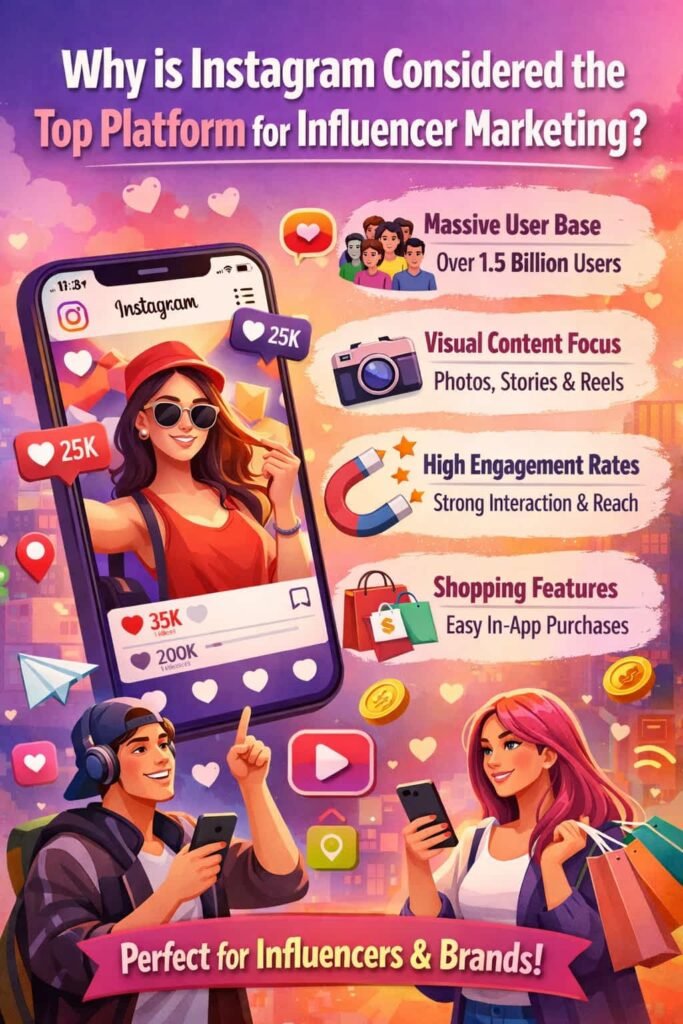
Instagram is highly favored among marketers, with 89% considering it the best platform for influencer marketing. This popularity is due to Instagram’s visual nature, extensive user base, and effective engagement tools, which make it ideal for showcasing products and building brand connections.
Instagram’s core strength lies in its visual appeal. The platform’s focus on images and videos allows brands to create visually stunning content that captures the attention of users quickly. High-quality visuals are essential in today’s marketing landscape, as they can convey messages more effectively and leave a lasting impression. For businesses, leveraging Instagram’s visual-centric nature can significantly enhance brand storytelling and product presentation.
With over a billion active users, Instagram offers a vast and diverse audience. This extensive user base includes a wide range of demographics, making it easier for businesses to reach their target market. Additionally, Instagram’s algorithm favors content that engages viewers, helping high-quality posts gain more visibility. Businesses can capitalize on this by creating engaging content that resonates with their audience and encourages interaction.
3. How Significant is Social Media in Influencer Marketing?
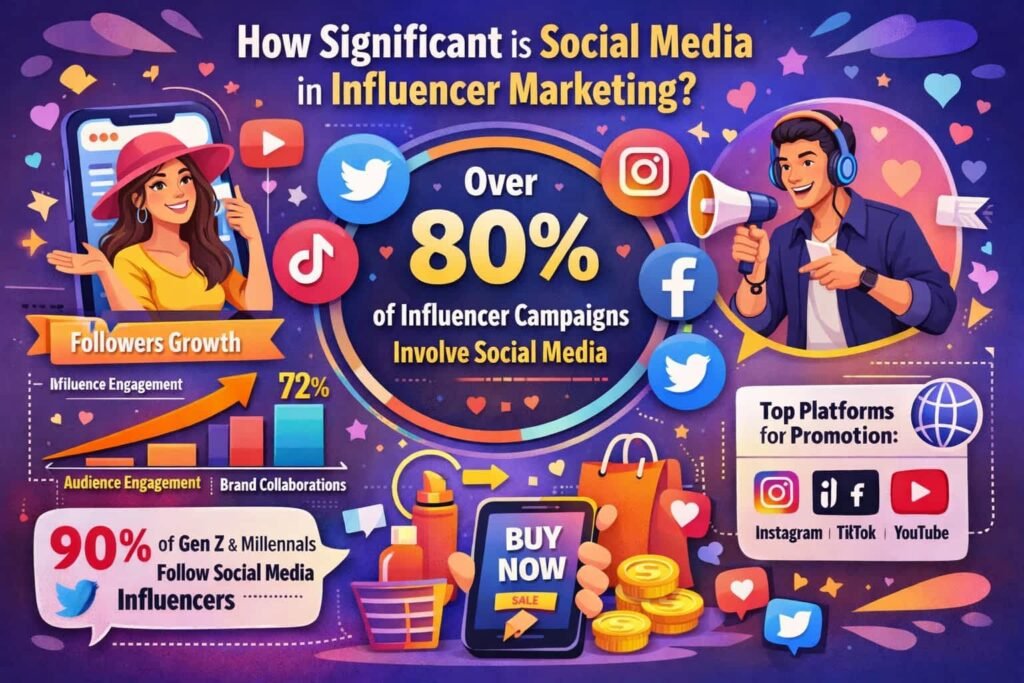
Globally, 4.74 billion people use social media, accounting for almost 60% of the world’s population. The average person spends about 2 hours and 30 minutes on social platforms daily. This high level of engagement makes social media a crucial channel for influencer marketing, allowing brands to reach and interact with large audiences.
The sheer number of social media users highlights its importance as a marketing channel. Social media platforms have become integral to daily life, influencing how people communicate, consume content, and make purchasing decisions. This pervasiveness provides brands with an unparalleled opportunity to reach diverse and global audiences. For businesses, tapping into this vast user base through influencer marketing can significantly enhance brand visibility and engagement.
Social media is a powerful tool for building brand awareness. Influencers, with their established followings and credibility, can introduce your brand to a wider audience. By collaborating with influencers who align with your brand values and resonate with your target audience, you can create authentic content that boosts brand recognition. This approach not only increases immediate visibility but also fosters long-term brand recall among consumers.
4. What Role Do Engagement Metrics Play in Influencer Marketing?
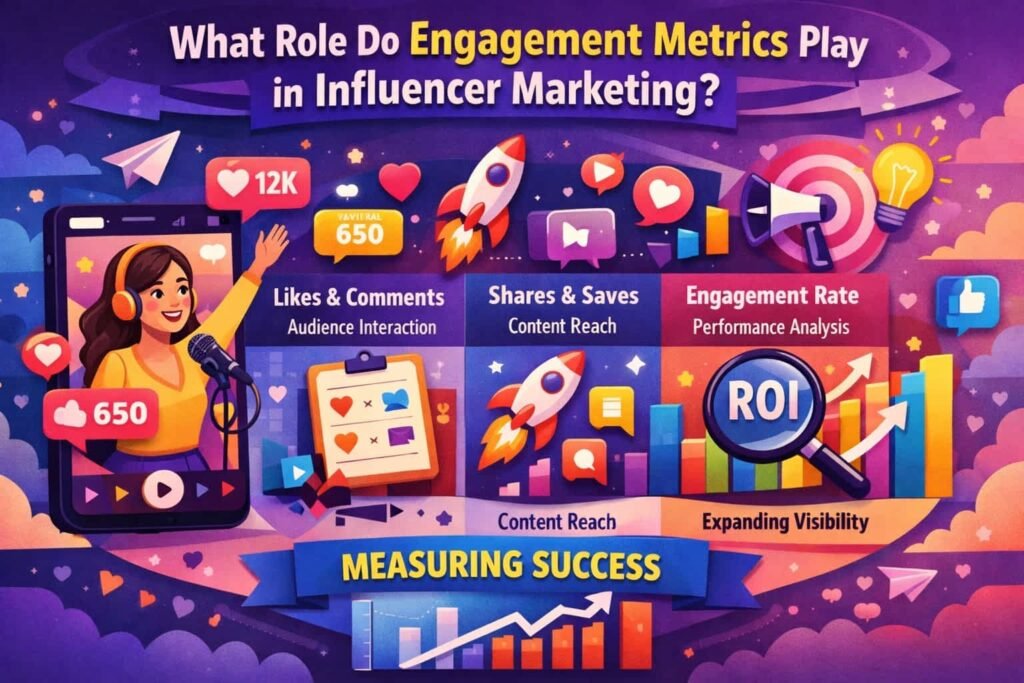
Over 75% of influencer marketers use social media engagement metrics to track performance. Metrics such as likes, comments, shares, and views help marketers understand the effectiveness of their campaigns and make data-driven decisions to optimize future efforts.
Engagement metrics are crucial in influencer marketing as they provide insights into how audiences interact with content. These metrics go beyond mere reach and impressions to reveal the depth of audience interaction and connection with the content. High engagement rates indicate that the content resonates with the audience, prompting them to take action, whether it’s liking, commenting, sharing, or clicking through to a website.
Engagement metrics help businesses gauge audience interaction and sentiment towards their campaigns. By analyzing comments and shares, marketers can understand what aspects of the content are most appealing or contentious. Positive engagement, such as thoughtful comments and high shares, often reflects a strong alignment between the content and audience interests. Negative feedback, on the other hand, provides valuable insights into areas that may need adjustment.
5. How Do Different Types of Influencers Perform on Instagram?
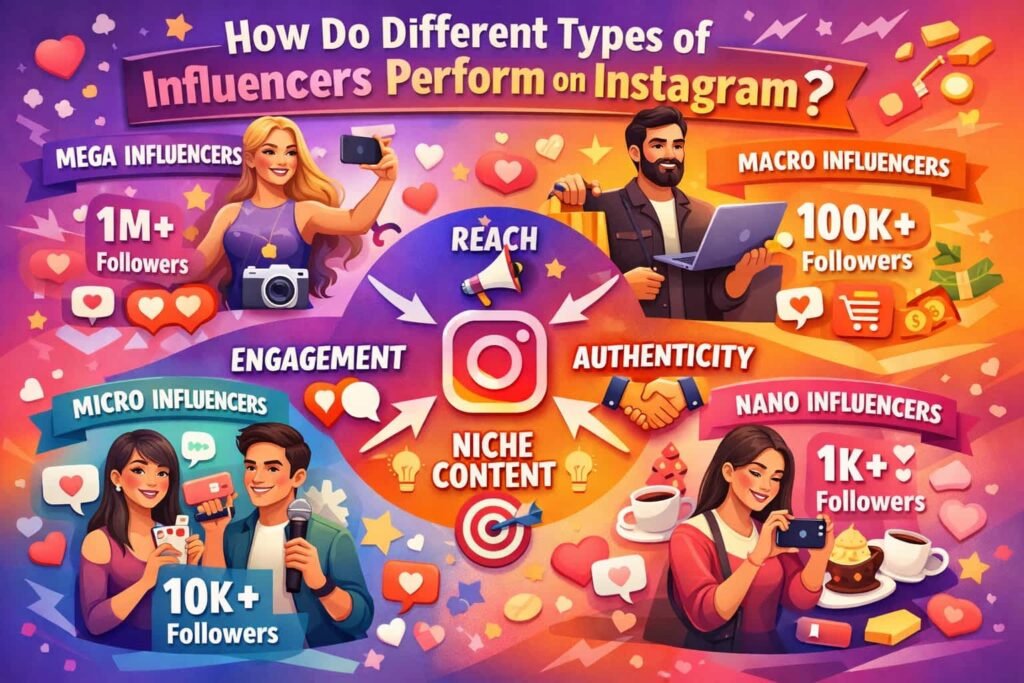
Nano-influencers, those with 1,000 to 10,000 followers, have the highest engagement rates at 2.53%. These smaller influencers often have highly engaged audiences that trust their recommendations, making them valuable partners for brands looking to achieve high engagement.
The influencer landscape on Instagram can be divided into several categories: nano-influencers, micro-influencers, mid-tier influencers, and macro or mega-influencers. Each type offers unique benefits and challenges, making it essential for businesses to understand how to leverage them effectively based on their marketing goals and target audience.
Nano-influencers, with their relatively small but highly engaged followings, excel in creating authentic connections with their audience. Their recommendations often carry significant weight as they are perceived as more relatable and trustworthy compared to larger influencers. Businesses can leverage nano-influencers for localized or niche campaigns where authenticity and trust are paramount. These influencers are also more cost-effective, allowing brands to engage multiple nano-influencers for a broader reach without a hefty budget.
6. What is the Market Size of Instagram Influencer Marketing?

The global market size for Instagram influencer marketing is expected to reach $22.2 billion by 2025. This growth highlights the platform’s significant role in the influencer marketing industry and its continued expansion as a marketing channel.
The rapid expansion of Instagram influencer marketing is driven by several key factors. The platform’s user base continues to grow, with over one billion active users globally. This extensive reach provides brands with access to diverse demographics, making it a valuable channel for targeting various audience segments.
Additionally, Instagram’s constant introduction of new features, such as Reels, IGTV, and shoppable posts, enhances the platform’s appeal for both influencers and brands, offering innovative ways to engage users and drive conversions.
7. How Do Influencer Charges Vary on Instagram?
Instagram influencers worldwide charge anywhere from $20 to over $7,000 per post, depending on their follower count and engagement rates. Nano-influencers charge between $20-$100, micro-influencers (10,000-50,000 followers) charge $35-$450, mid-tier influencers (50,000-500,000 followers) charge $150-$2,500, and mega-influencers (1 million+ followers) charge upwards of $1,200.
The cost of influencer collaborations on Instagram is influenced by several factors beyond just follower count. Engagement rate is a crucial determinant; influencers with higher engagement often charge more because their audience is more likely to interact with the content. Additionally, niche relevance plays a significant role. Influencers in highly specialized fields may charge a premium due to their targeted and dedicated audience, which can lead to higher conversion rates for specific products or services.
8. Which Categories Dominate Instagram Influencer Marketing?
Lifestyle is the most popular category among Instagram influencers, accounting for 14.32% of all influencers. Other significant categories include music (8.5%), beauty (7.63%), and family (5.74%). These niches attract substantial audience engagement and brand partnerships.
The dominance of lifestyle influencers on Instagram can be attributed to the platform’s visual and aspirational nature. Lifestyle influencers share a wide range of content, from daily routines and personal experiences to travel, food, and fashion. This versatility allows them to appeal to a broad audience and attract diverse brand partnerships. Businesses can leverage lifestyle influencers to promote products and services in a way that feels organic and relatable, enhancing brand authenticity and engagement.
9. How Effective is Influencer Marketing Compared to Traditional Advertising?
Influencer marketing achieves 11 times the ROI of banner ads. This impressive return on investment underscores the effectiveness of influencer partnerships in driving engagement and conversions compared to more traditional advertising methods.
The shift from traditional advertising methods, such as television and print ads, to digital and social media platforms is driven by changing consumer behaviors. Modern consumers spend more time online and trust recommendations from people they follow and admire. Influencer marketing capitalizes on this trust, leveraging the personal connections influencers have with their followers to promote products and services more authentically and effectively.
10. What Are the Most Mentioned Brands by Influencers on Instagram?

The top brands mentioned by influencers on Instagram in 2022 were Instagram itself (85,500 influencers), Zara (66,400 influencers), and Shein (57,200 influencers). These brands effectively leverage influencer partnerships to enhance their visibility and reach.
The prevalence of certain brands in influencer mentions highlights their strategic use of influencer marketing. Brands like Instagram, Zara, and Shein have successfully integrated influencer marketing into their overall strategies, creating a strong presence on the platform. This dominance is not accidental but the result of carefully planned and executed campaigns that resonate with both influencers and their followers.
11. How Do TikTok Influencers Compare to Other Platforms?
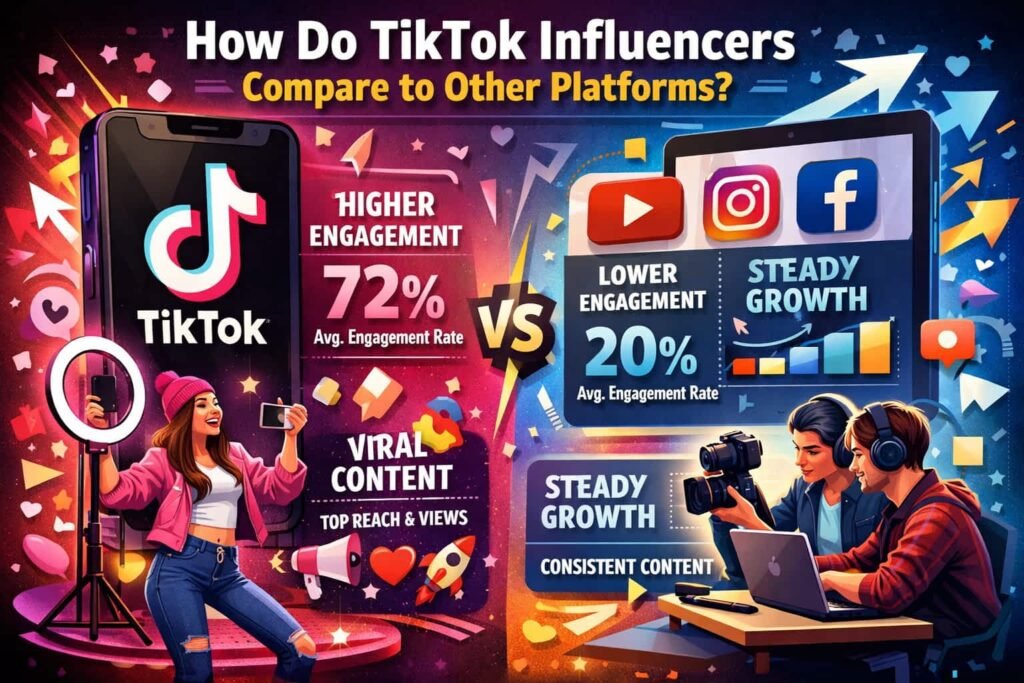
TikTok influencers with 1,000 to 5,000 followers have an impressive engagement rate of 15.04%. This high engagement level is due to TikTok’s algorithm, which promotes content that resonates well with viewers, regardless of the creator’s follower count. As a result, even smaller influencers can achieve significant reach and interaction on this platform.
TikTok’s algorithm is designed to surface content that is engaging and relevant to users, regardless of the creator’s follower count. This democratized content discovery model allows lesser-known influencers to gain visibility and attract large audiences quickly. Unlike platforms where follower count heavily influences reach, TikTok’s algorithm focuses on content quality and viewer interaction, making it an ideal platform for businesses to discover and collaborate with emerging talent.
12. What Are the Growth Trends for TikTok Influencers?
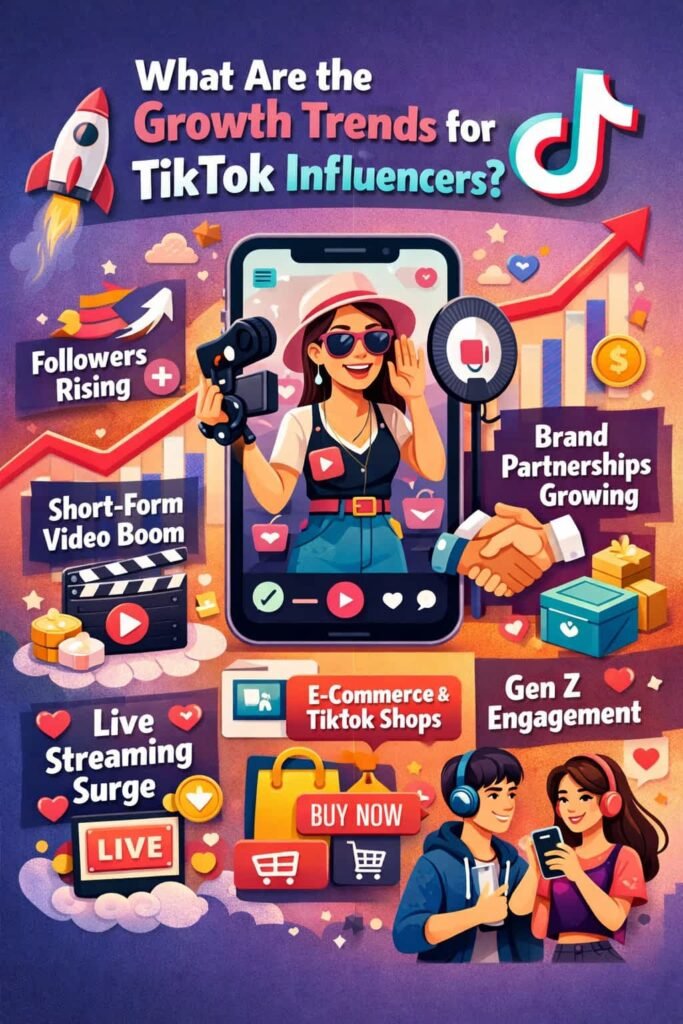
67% of TikTok influencer accounts have between 1,000 and 10,000 followers, followed by micro-influencers (10,000 to 50,000 followers) at 23%. This distribution indicates a large base of smaller influencers who are highly engaged with their followers, making them attractive partners for brands looking to target niche audiences.
The significant presence of nano and micro-influencers on TikTok underscores a trend towards more personalized and authentic content. These influencers often have a closer relationship with their followers, leading to higher engagement rates and trust. For businesses, collaborating with nano and micro-influencers can provide access to niche markets and foster more genuine connections with potential customers. This strategy is particularly effective for brands aiming to build credibility and loyalty within specific communities.
13. How Popular is YouTube for Influencer Marketing?

There are nearly 500,000 YouTube influencers in the United States alone. YouTube remains a vital platform for influencer marketing, especially for long-form content. The platform’s extensive reach and high viewer engagement make it ideal for brands looking to create in-depth and impactful marketing campaigns.
YouTube’s unique advantage lies in its ability to host long-form content, which allows influencers to dive deep into topics and provide comprehensive reviews, tutorials, and vlogs. This depth of content fosters a stronger connection between influencers and their audience, as viewers often invest more time and trust in creators who offer valuable, detailed information. For businesses, partnering with YouTube influencers means having the opportunity to convey more complex and nuanced messages that can effectively educate and convert viewers.
14. What Types of Content Perform Best on YouTube?
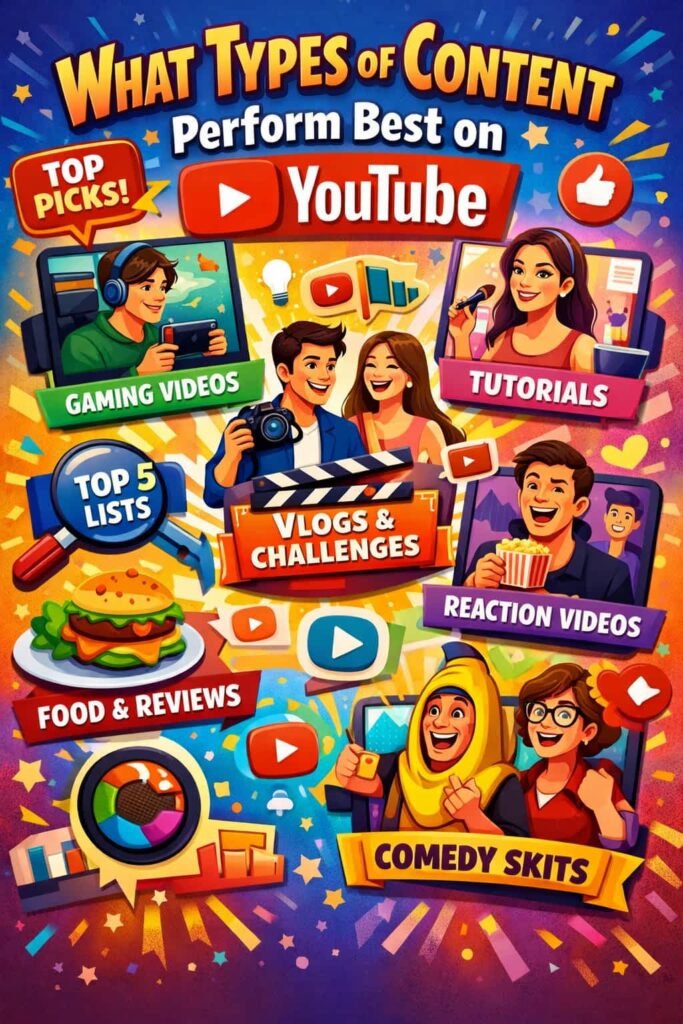
The most popular category for YouTube influencers is “People and Blogs,” which accounts for 21% of posted influencer videos. This is followed by entertainment (16.8%) and music (13.7%). These categories attract large audiences who are highly engaged with the content, making them effective for influencer partnerships.
YouTube’s diverse content landscape allows for various types of content to thrive. The “People and Blogs” category, for instance, encompasses a wide range of personal vlogs, lifestyle content, and day-in-the-life videos.
These videos are highly relatable and provide a window into the daily lives of influencers, fostering a sense of connection and authenticity. For businesses, collaborating with influencers in this category can humanize their brand and create a more personal connection with their audience.
Entertainment content, which includes comedy, challenges, and reaction videos, is another highly popular category. These videos are designed to entertain and often go viral due to their shareable nature. Brands can leverage entertainment influencers to create fun, engaging campaigns that resonate with a broader audience. Integrating product placements in a way that complements the entertainment value can enhance brand recall and engagement.
15. How Do Influencers Impact Consumer Purchasing Decisions?
Four out of ten consumers have purchased something after seeing it recommended by an influencer. Younger demographics are particularly influenced by social media recommendations, with 54% of users aged 18 to 29 reporting that influencers affect their buying decisions. This influence diminishes with older age groups but remains significant.The trust and credibility that influencers build with their followers play a crucial role in impacting purchasing decisions. Followers view influencers as relatable figures who provide genuine and personal insights into products. This personal connection fosters a sense of trust that traditional advertising struggles to achieve. For businesses, leveraging this trust means selecting influencers who genuinely align with their brand values and have a strong, authentic relationship with their audience.

16. How Do Influencers on Different Platforms Charge for Their Services?
The cost per post varies significantly across platforms. For example, Twitch has the highest average cost per post at $4,373, reflecting the high engagement and viewer loyalty on this platform. In contrast, Facebook posts are more affordable, averaging around $642 per post.
Different social media platforms offer unique advantages, which are reflected in the pricing structures of influencers. The cost influencers charge is influenced by several factors, including follower count, engagement rates, content format, and the overall reach and influence of the platform.
Twitch and YouTube typically command higher fees due to their high engagement levels and the nature of their content. Twitch, for instance, is primarily a live-streaming platform where influencers interact with their audience in real-time, fostering strong viewer loyalty and engagement.
This direct interaction and the longer duration of content make Twitch influencers particularly valuable for brands seeking deep engagement. For businesses, investing in Twitch influencers can be worthwhile for campaigns aimed at building brand loyalty and fostering a strong community presence.
YouTube influencers also tend to charge more because of the platform’s capacity for long-form content. Videos on YouTube can provide detailed product demonstrations, in-depth reviews, and storytelling, which can significantly impact purchasing decisions. Brands should consider the value of the extensive reach and the lasting impact of YouTube videos when budgeting for influencer collaborations on this platform.
17. What are the Key Metrics for Measuring Influencer Marketing Success?
Key metrics for measuring influencer marketing success include engagement rates, ROI, and customer acquisition quality. For instance, 51% of marketers say influencer marketing helps them acquire better customers, and 36% believe that influencer-generated content performs better than branded posts.
Engagement rates are one of the most critical metrics for evaluating the success of influencer marketing campaigns. These rates include likes, comments, shares, and saves on social media posts. High engagement rates indicate that the content resonates with the audience and fosters interaction.
Businesses should analyze engagement rates to understand which types of content and which influencers generate the most interest and activity. Tools like Instagram Insights, YouTube Analytics, and third-party platforms can provide detailed engagement metrics.
Calculating ROI is essential for determining the financial effectiveness of influencer marketing campaigns. ROI measures the revenue generated from the campaign relative to the cost of the influencer partnership.
To calculate ROI, businesses should track direct sales conversions, website traffic, and other revenue-related metrics attributable to the influencer campaign. Integrating unique discount codes, affiliate links, or UTM parameters can help in accurately attributing sales to specific influencers and campaigns.
18. How Do Influencers on Instagram Vary by Follower Count?
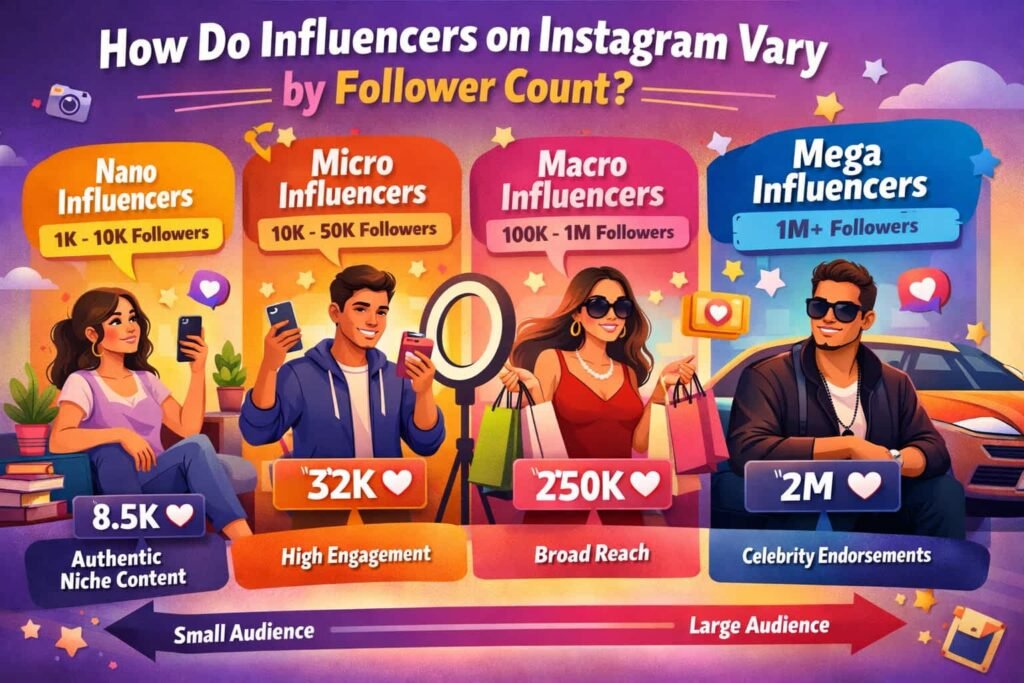
Instagram influencers with 1,000 to 10,000 followers account for 65.39% of all influencer accounts worldwide. This large group of nano-influencers is followed by micro-influencers (10,000 to 50,000 followers) at 27.73%, mid-tier influencers (50,000 to 500,000 followers) at 6.38%, and mega-influencers (1 million+ followers) at 0.23%.
Nano-influencers, those with 1,000 to 10,000 followers, are characterized by their highly engaged and loyal audiences. These influencers typically have strong personal connections with their followers, resulting in higher engagement rates.
For businesses, collaborating with nano-influencers can be particularly effective for localized or niche marketing campaigns. These influencers can deliver authentic and relatable content that resonates well with their audience, making them ideal for brands looking to build trust and foster community.
Micro-influencers, who have 10,000 to 50,000 followers, offer a balance between reach and engagement. They often specialize in specific niches, such as fitness, fashion, beauty, or tech, and have established themselves as experts within these areas.
Brands can leverage micro-influencers to target specific segments of their audience more precisely. Collaborating with multiple micro-influencers can create a broad yet targeted reach, enhancing the overall impact of marketing campaigns.
Mid-tier influencers, with 50,000 to 500,000 followers, provide a substantial reach while maintaining a personal connection with their audience. These influencers are typically more professional in their approach, often creating high-quality content that aligns closely with brand aesthetics and values.
For businesses, mid-tier influencers can deliver significant visibility and engagement, making them suitable for larger-scale campaigns. Their content often carries more weight due to their established credibility and influence within their niche.
Mega-influencers, who boast over 1 million followers, have a vast reach and are often celebrities or public figures. While their engagement rates may be lower compared to nano and micro-influencers, the sheer volume of their audience can drive massive visibility and brand awareness.
Collaborating with mega-influencers is ideal for major product launches, brand repositioning, or reaching a global audience. However, businesses should carefully consider the cost-effectiveness of these partnerships, as they often come with a high price tag.
19. What Factors Do B2B Brands Consider When Choosing Influencers?
B2B brands look for influencers with a relevant audience (98%), trustworthiness (87%), and subject matter expertise (78%). These qualities ensure that the influencer can effectively communicate with the target audience and provide credible endorsements.
The relevance of an influencer’s audience to the B2B brand’s target market is paramount. B2B brands need to ensure that the influencer’s followers align closely with their potential customers. This involves analyzing the influencer’s demographic data, such as industry, job titles, and company sizes.
For example, a software company targeting IT managers should collaborate with influencers who have a significant following within the IT community. This alignment ensures that the content reaches the right decision-makers and stakeholders, increasing the likelihood of engagement and conversion.
Trustworthiness is a critical factor for B2B brands when selecting influencers. The influencer must have a reputation for providing honest, unbiased opinions and content. Brands should look for influencers who have consistently demonstrated integrity and transparency in their collaborations.
Checking past collaborations, audience feedback, and overall online presence can help assess an influencer’s credibility. A trustworthy influencer can significantly enhance a brand’s reputation and build long-term relationships with its audience.
20. How Do B2B Brands Utilize Influencer Marketing?

Webinars are the top favored form of B2B influencer marketing content, used by 81% of brands. This is followed by social media (74%) and blog posts (71%). Webinars are particularly effective in the B2B space due to their ability to provide in-depth information and facilitate direct engagement with the audience.
Webinars offer a platform for deep engagement and education, making them a cornerstone of B2B influencer marketing. They allow brands to showcase their expertise, introduce new products, and address industry-specific challenges in a detailed manner.
By partnering with influencers who are recognized thought leaders, B2B brands can attract a targeted audience and enhance the credibility of their webinars. These sessions can be interactive, featuring Q&A segments, live demonstrations, and real-time feedback, fostering a two-way communication channel that traditional marketing methods often lack.
Social media platforms like LinkedIn, Twitter, and Facebook are essential for B2B influencer marketing. Influencers can use these platforms to share insights, industry news, and thought leadership content that resonates with their professional followers.
B2B brands can collaborate with influencers to host live sessions, participate in industry discussions, and share white papers or case studies. This approach not only amplifies the brand’s reach but also positions it as a thought leader in its industry. Creating a consistent and engaging presence on social media helps build a community around the brand and keeps it top-of-mind for potential clients.
21. How Do Brands Measure the Success of Influencer Marketing Campaigns?
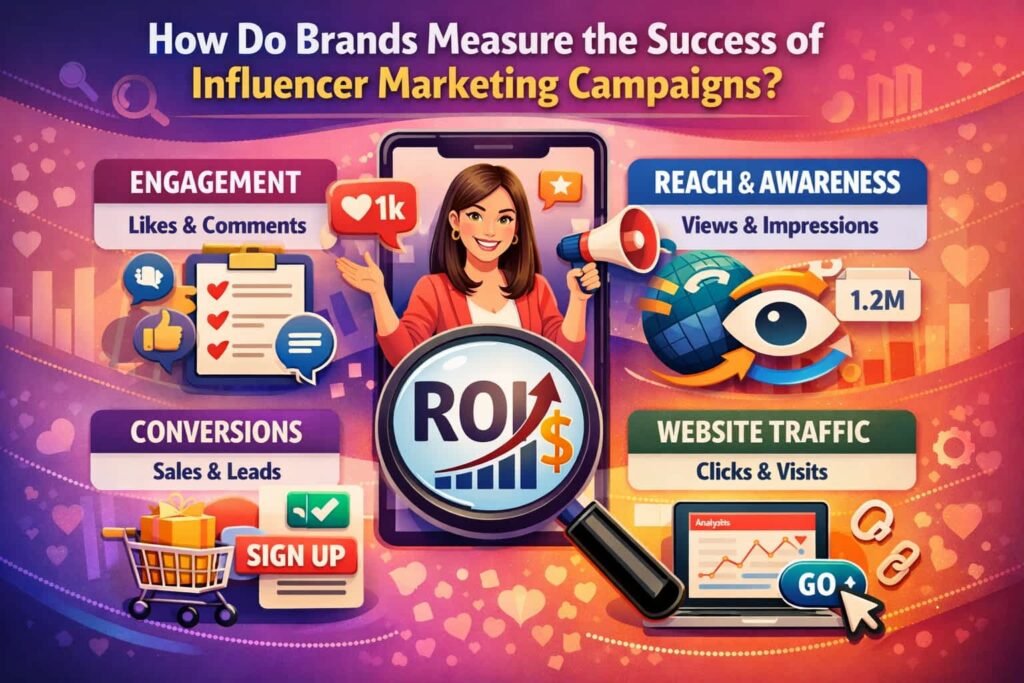
Brands measure the success of influencer marketing campaigns using various key performance indicators (KPIs). The most common KPIs include engagement rates (likes, comments, shares), reach, impressions, and ROI. According to a Convince and Convert study, influencer marketing achieved 11 times the ROI compared to banner ads, highlighting its effectiveness in driving significant returns.
Engagement metrics are fundamental in assessing the effectiveness of influencer marketing campaigns. These metrics provide insights into how well the audience interacts with the content. Brands should analyze likes, comments, shares, and saves to gauge the level of interest and interaction.
High engagement rates often indicate that the content resonates with the audience, leading to deeper connections and potential conversions. For a more nuanced understanding, businesses can also look at the quality of engagement by reviewing the sentiment of comments and the nature of interactions.
Reach and impressions are critical metrics for understanding the overall visibility of influencer campaigns. Reach measures the unique number of individuals who see the content, while impressions count the total number of times the content is viewed.
These metrics help brands determine the campaign’s potential to increase brand awareness. To optimize reach and impressions, businesses should select influencers with a follower base that closely matches their target audience and ensure that the content is shareable and engaging.
22. What is the Distribution of Influencer Types on Social Media?
On Instagram, influencers with 1,000 to 10,000 followers (nano-influencers) make up 65.39% of all influencer accounts worldwide. Micro-influencers, with 10,000 to 50,000 followers, account for 27.73%, while mid-tier influencers (50,000 to 500,000 followers) represent 6.38%. Mega-influencers and celebrities, with more than 1 million followers, constitute only 0.23% of the influencer population.
Nano-influencers are a dominant force on social media due to their highly engaged and loyal followings. These influencers often have strong personal connections with their audience, resulting in high engagement rates. For businesses, collaborating with nano-influencers can be particularly beneficial for grassroots marketing efforts.
Their authentic and relatable content can drive genuine interactions and build trust among potential customers. Brands should focus on leveraging nano-influencers to create localized and niche campaigns that resonate deeply with specific audience segments.
Micro-influencers, with their larger followings compared to nano-influencers, offer a balance between reach and engagement. They often specialize in specific niches, allowing brands to target more precisely. Collaborating with micro-influencers can help businesses tap into dedicated communities and generate high-quality leads.
These influencers are ideal for campaigns that require both a broad reach and strong audience connection. By engaging micro-influencers, brands can benefit from their ability to provide detailed product reviews, tutorials, and expert opinions, enhancing the credibility and impact of their marketing efforts.
Mid-tier influencers, who have a significant reach while maintaining personal engagement with their audience, are valuable for larger-scale campaigns. These influencers typically produce high-quality content that aligns closely with brand aesthetics and values.
Businesses can utilize mid-tier influencers for comprehensive marketing strategies that include product launches, brand storytelling, and in-depth content creation. The influence of mid-tier influencers can drive substantial visibility and engagement, making them a strategic choice for brands looking to scale their marketing efforts.
Mega-influencers and celebrities, although a small percentage of the influencer population, wield considerable influence due to their vast follower bases. Collaborating with these influencers can provide brands with massive reach and visibility, making them suitable for major product launches and global campaigns.
However, the high costs associated with mega-influencers necessitate careful consideration of ROI. Brands should ensure that collaborations with mega-influencers are strategically aligned with their marketing goals and can deliver significant impact.
23. How Do Influencer Engagement Rates Vary Across Platforms?
Nano-influencers on Instagram have the highest engagement rates at 2.53%, while TikTok influencers with 1,000 to 5,000 followers boast a 15.04% engagement rate. On YouTube, engagement rates tend to be lower for influencers with fewer subscribers. These variations highlight the importance of choosing the right platform and influencer type for specific marketing goals.
24. What Are the Most Common Content Types for Influencer Marketing?
For B2B brands, webinars are the most popular form of influencer marketing content, used by 81% of marketers. In the B2C space, social media posts, blog articles, and videos are common content types. Influencers often create authentic, relatable content that resonates well with their audiences, driving engagement and conversions.
25. How Do Influencer Marketing Strategies Differ Between B2B and B2C?
B2B influencer marketing focuses on expertise and credibility, with brands seeking influencers who can provide in-depth knowledge and insights. In contrast, B2C influencer marketing often emphasizes lifestyle and entertainment, with brands partnering with influencers who can showcase their products in a relatable and engaging manner. Both strategies require careful selection of influencers to ensure alignment with brand values and audience interests.
26. How Do Influencers Build Trust with Their Audiences?
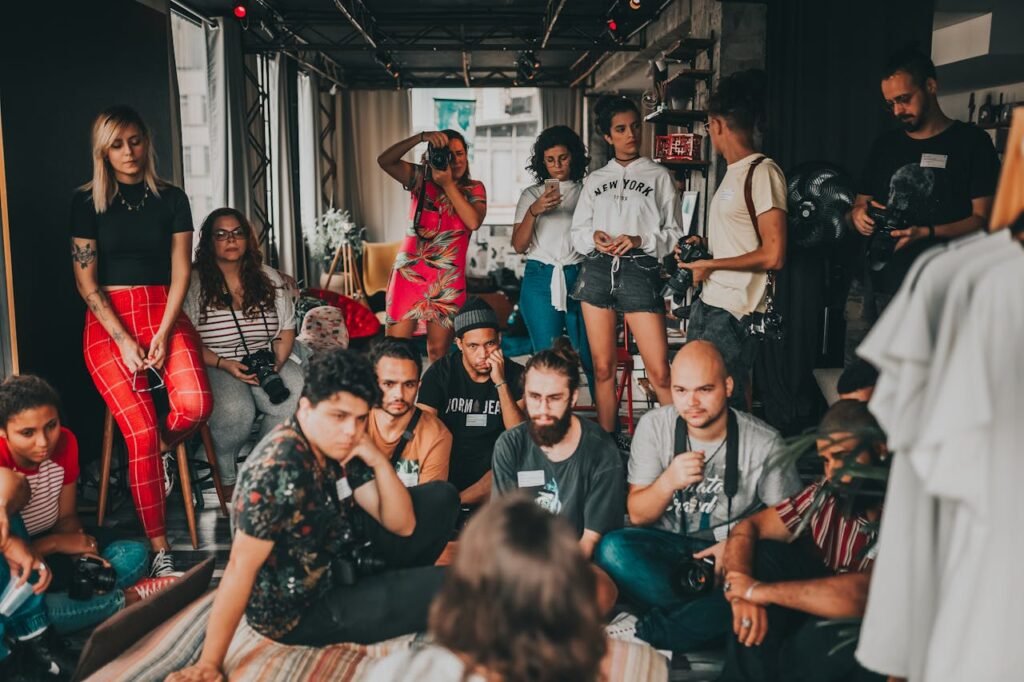
Influencers build trust with their audiences by creating authentic content, being transparent about sponsorships, and consistently engaging with their followers. Trustworthiness is crucial for influencer marketing success, as 87% of B2B brands consider audience trust a key quality in influencers. Regular interaction through comments, live sessions, and personalized responses helps strengthen the bond between influencers and their audiences.
27. How Does Influencer Marketing Impact Brand Awareness?
Influencer marketing significantly boosts brand awareness by leveraging the reach and credibility of influencers. With 43% of people turning to social media for product recommendations, influencers play a pivotal role in introducing brands to new audiences. Effective influencer partnerships can lead to increased visibility, engagement, and ultimately, sales.
28. What Are the Financial Implications of Influencer Marketing?
The financial implications of influencer marketing include costs per post, which vary by platform and influencer tier. For example, Instagram influencers can charge anywhere from $20 to over $7,000 per post, depending on their follower count and engagement rates. Despite these costs, influencer marketing offers a high ROI, with some studies indicating it can achieve 11 times the ROI of traditional advertising methods.
29. How Do Different Social Media Platforms Compare for Influencer Marketing?
Instagram, TikTok, and YouTube are the top platforms for influencer marketing, each offering unique advantages. Instagram is favored for its visual content and high engagement rates, TikTok for its viral potential and younger audience, and YouTube for its long-form content and extensive reach. Brands should choose platforms based on their target audience and marketing objectives.
30. What Future Trends Are Expected in Influencer Marketing?
Future trends in influencer marketing include increased use of AI and data analytics to optimize campaigns, a focus on micro and nano-influencers for higher engagement, and the growth of new platforms like Twitch and Clubhouse. As the industry evolves, brands and influencers will need to adapt to changing consumer behaviors and technological advancements to stay competitive.
We got all the latest Marketing Stats here:
Read next
- How to Set Up Conversion Tracking for Booking Engines
- Interactive Content Can Skyrocket Your Lead Capture. We Show How!
- How to Utilize Dynamic Content in Email Campaigns
- What is a SMART Plan? And, Why You Need One
- How AI LLMs will Revolutionize SEO (in 2023): Our Insights!





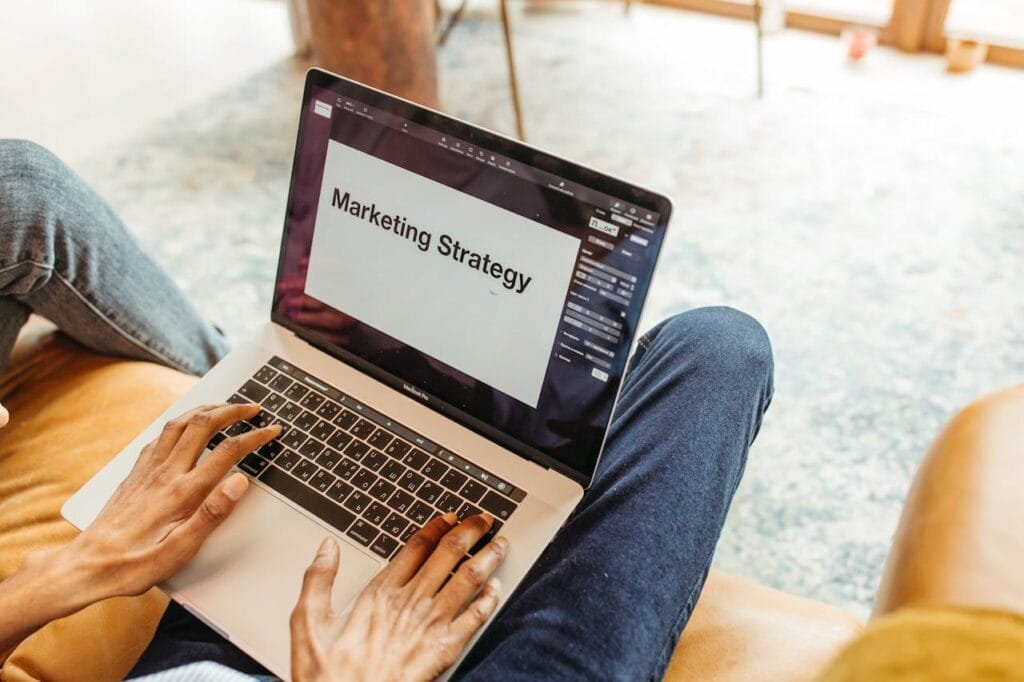






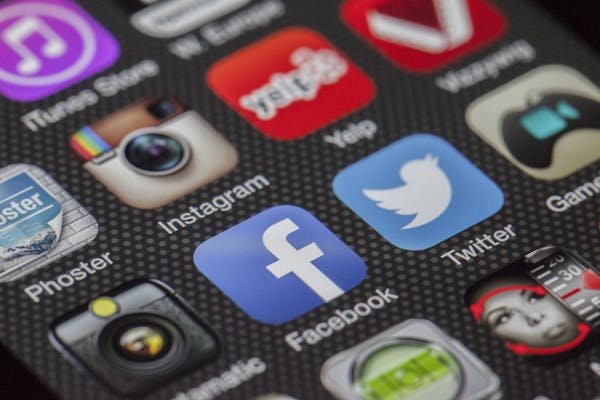



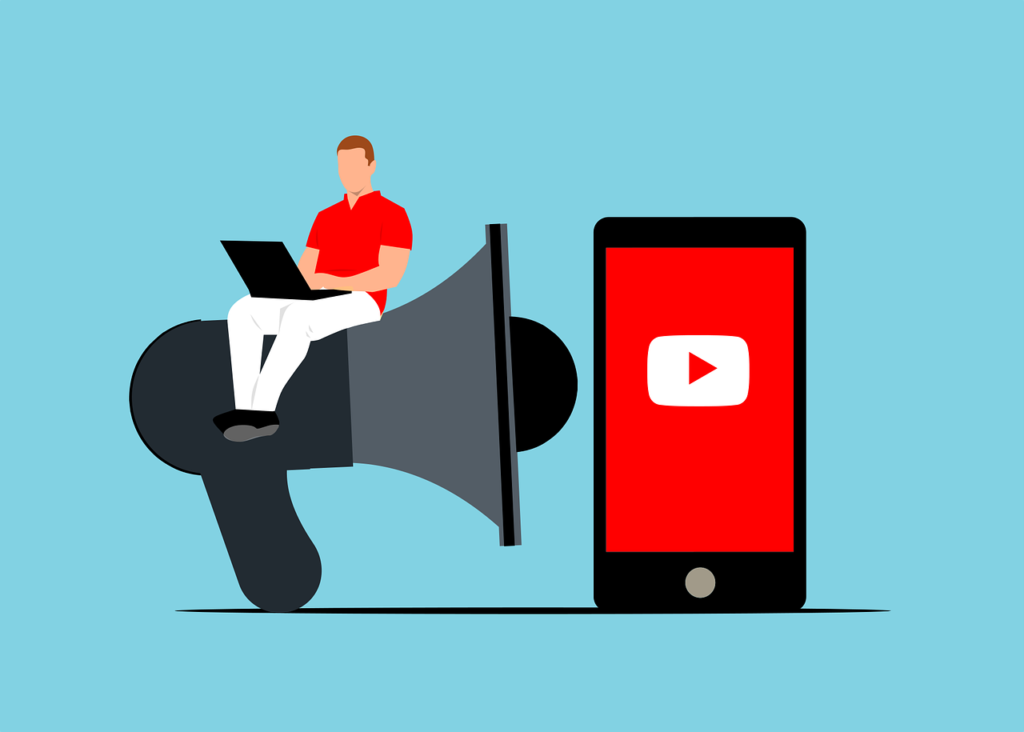




Comments are closed.